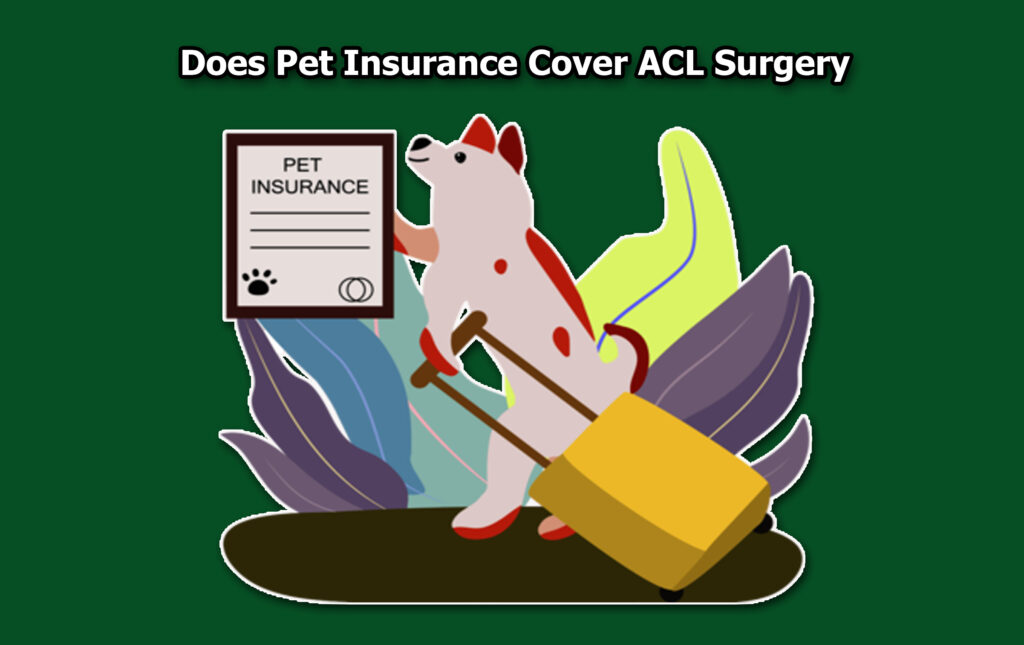Does pet insurance cover ACL surgery? If your dog suddenly starts limping or refuses to put weight on a leg, a torn ACL might be the reason, and the surgery to fix it isn’t cheap. But does pet insurance cover the cost?

Torn ACLs (technically known as CCL injuries in dogs) are one of the most common orthopedic problems in pets, especially active or aging dogs.
Treatment often involves expensive procedures like TPLO surgery, which can cost several thousand dollars.
For many pet owners, this raises an important question: can pet insurance help ease the financial burden?
Let’s find out!
What Is ACL Surgery For Dogs?
In dogs, a torn cranial cruciate ligament (CCL), which is similar to the ACL in humans, can lead to pain, instability, and long-term joint damage if left untreated.
Surgery is often the most effective way to restore mobility and reduce pain. Common procedures include TPLO (tibial plateau leveling osteotomy) or TTA (tibial tuberosity advancement), both of which require skilled veterinary care and can cost anywhere from $2,000 to $5,000 or more per leg.
Does Pet Insurance Cover The Surgery?
Most pet insurance plans do cover ACL surgery, but there are some conditions to be aware of:
Accident and Illness Coverage
You will need a plan that covers both accidents and illnesses. These comprehensive policies are more likely to include cruciate ligament injuries.
Waiting Periods
Many insurers have a waiting period (often 6–12 months) specifically for cruciate ligament injuries. If your pet shows signs of the injury before the waiting period ends, it may be considered a pre-existing condition, which is not covered.
Pre-existing Conditions
If your dog had signs of an ACL issue or was diagnosed before you purchased insurance or during the waiting period, coverage will likely be denied.
Bilateral Conditions
Some policies consider ACL injuries as a bilateral condition, meaning if your dog has surgery on one leg before the policy starts, the second leg might not be covered either.
What It Covers?
If your pet qualifies and you’re past any waiting periods, your insurance may reimburse:
- Diagnostic tests (X-rays, MRIs)
- Surgery costs (TPLO, TTA)
- Anesthesia
- Hospitalization
- Follow-up care
- Physical therapy (if included in your plan)
Reimbursement amounts depend on your policy. Most plans cover 70% to 90% of eligible costs after you meet your deductible.
What It Does Not Cover
Even with coverage, certain costs may not be included:
- Pre-existing ACL injuries
- Preventive care or wellness visits
- Alternative therapies not listed in the policy
- Costs above your annual or per-condition limit
Always check the fine print of your plan to avoid surprises.
How To Make Sure You’re Covered
If you’re shopping for pet insurance or updating an existing plan, here are a few tips:
- Choose a comprehensive accident and illness plan.
- Ask specifically about ACL or cruciate ligament coverage.
- Check for waiting periods and bilateral exclusions.
Lastly, you should consider a plan with rehab or physical therapy benefits if your vet recommends it after surgery.
Final Thoughts
ACL surgery can be a major expense, but pet insurance can make it more manageable if your plan covers it and your pet qualifies.
To avoid getting stuck with high out-of-pocket costs, it’s best to enroll your pet before problems start and understand your policy’s limits and waiting periods.



